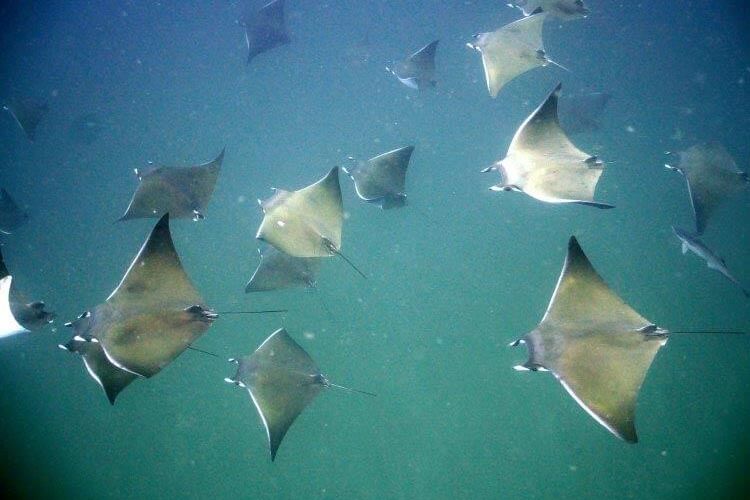
A unique ‘Devil Ray Conservation Dive’ programme is to be launched this December at Aliwal Shoal off the coast of KwaZulu-Natal province, South Africa.
The initiative is the work of Michelle Carpenter, a PhD candidate specialising in mobulids (devil rays and manta rays) at the University of Cape Town, who in 2020 discovered that the Marine Protected Area (MPA) surrounding Aliwal Shoal was home to a number of cleaning stations used by shortfin devil rays.
The discovery marks Aliwal Shoal as only the second known place in the world where shortfin devil rays (Mobula kuhlii) are known to congregate at cleaning stations, after Bazaruto Archipelago in Mozambique. Manta rays have been documented visiting the same cleaning station at Aliwal Shoal for more than 30 years, but the presence of shortfin devil rays at the site appears to have gone unnoticed, although their presence has been documented each year since Carpenter’s discovery.
‘The endangered shortfin devil ray is closely related to manta rays and is generally rare to see,’ said Carpenter, currently a PhD candidate at the Univesity of Cape Town, where she specialises in mantas and devil rays. ‘Manta rays are famous around the world for their cleaning stations, but most devil ray cleaning stations have not yet been found.’
More about mobulids

‘These cleaning stations are areas where sharks and rays repeatedly return to, making them hotspots critical to protect for their conservation,’ said Carpenter. ‘One of the already famous cleaning stations on Aliwal Shoal would be ‘Cathedral’, where spotted ragged tooth sharks, potato bass, and other creatures visit to be cleaned.’
Devil ray facts
- Shortfin devil rays, like all mobulids, are filter-feeders that prey on zooplankton, growing up to 120cm in disc width.
- So little is known about this family of rays that their taxonomy is still being questioned.
- Mobulid ray species – including devil rays and mantas – are slow growing, with live birth, long pregnancies (10 or more months) and small litters of pups, making them particularly vulnerable to overfishing.
- One of the biggest threats to mobulids is the harvesting of their gill-rakers for use in ‘traditional’ Chinese medicine.
- Overfishing and bycatch from longlines, tuna seine nets, gill nets, and trawling have had a devastating impact on mobulid populations.
To assist with research into the rays and play a part in their conservation, visitors to the KwaZulu-Natal coast will be able to participate in a ‘Devil Ray Conservation Dive’, organised by Ms Carpenter. The conservation dive will be hosted at ScubaXcursion Dive Centre and ScubaCo Diving & Travel for a fee of R200 (£10) above the prices of regular dives, and other local centres are being invited to sign up for the 2023-2024 season.

‘South Coast Tourism and Investment Enterprise [SCTIE] is excited to welcome the launch of this conservation initiative that will bring our tourists closer to the incredible marine life found here,’ said Phelisa Mangcu, CEO of SCTIE. ‘With Aliwal Shoal and Protea Banks already two of the world’s top dive sites, it’s wonderful that we’re now able to further enhance our offerings for international divers. The preservation and protection of our wildlife and natural areas is a priority, and we’ll continue to support such impactful initiatives.’
The dives will include a Code of Conduct taught by trained local dive masters, who will brief divers on the basic biology and conservation of shortfin devil rays. Divers will also receive a complimentary Mobula ray hand-knitted plushie as part of an initiative to bring more marine biology-based activities to local school children.
A donation will also be made to the Clansthal Conservancy, which has a monitoring programme of Aliwal Shoal, as well as contributing to acoustic telemetry research of devil rays to determine their movements inside and outside of the MPA.


